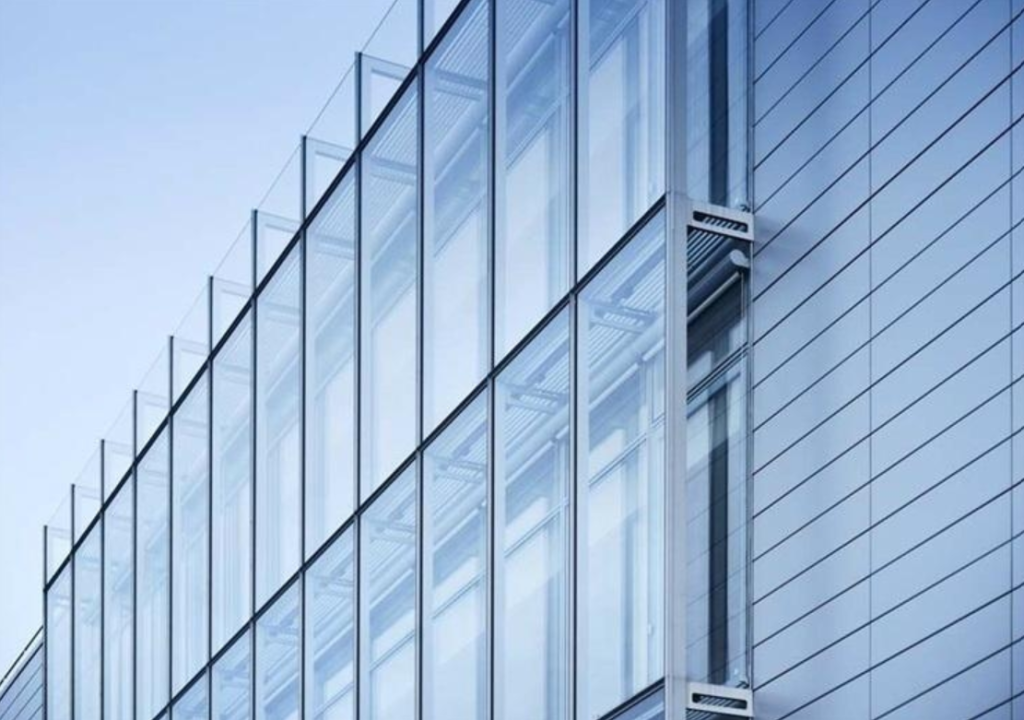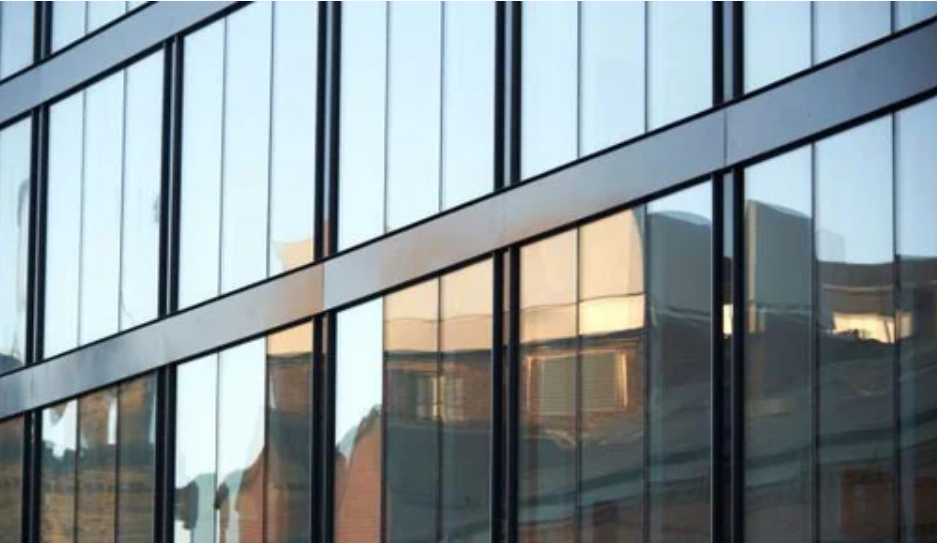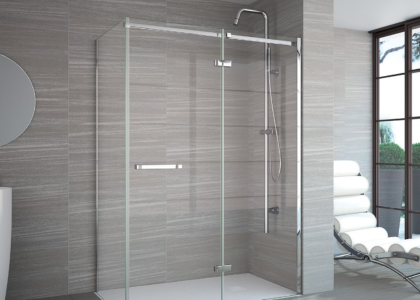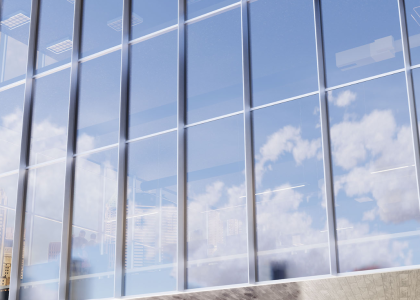Table of Contents
In the rapidly evolving architectural landscape of Pakistan, curtain walls have become a hallmark of contemporary building design, offering sleek aesthetics, energy efficiency, and structural innovation. As the best architectural and decorative glass company in Pakistan, Green Glass Designer specializes in delivering premium curtain wall solutions that blend functionality with elegance for residential, commercial, and corporate projects. From towering corporate headquarters in Islamabad to luxurious hotels in Karachi and modern villas in Lahore, curtain walls are essential for creating light-filled, visually striking facades.
One of the key decisions in curtain wall design is choosing between stick curtain walls and unitized curtain walls. These two systems differ significantly in construction, installation, performance, and suitability for various projects. This article provides an in-depth comparison of stick vs unitized curtain walls, exploring their features, advantages, disadvantages, applications, and factors to consider when selecting the right system. With our expertise at Green Glass Designer, we guide clients through every step—from consultation and CAD mock-ups to precision fabrication and expert installation—to ensure your project achieves optimal results.
What Are Curtain Walls?
Curtain walls are non-structural outer coverings of buildings, typically made from lightweight materials like glass, aluminum, or steel, that protect the interior from weather while allowing natural light to penetrate. Unlike load-bearing walls, curtain walls hang from the building’s frame like a curtain, transferring wind loads and their own weight to the structure. They enhance energy efficiency, reduce building weight, and provide architectural flexibility.
In Pakistan’s diverse climate—from the humid coasts of Karachi to the colder winters in Islamabad—curtain walls must withstand extreme weather, seismic activity, and urban pollution. Green Glass Designer uses high-quality tempered or laminated glass in our curtain walls to ensure safety, thermal insulation, and UV protection. The two main installation methods—stick and unitized—determine how these systems are assembled and perform.

Stick Curtain Walls: On-Site Assembly for Flexibility
Stick curtain walls are the traditional method of curtain wall construction, where individual components (mullions, transoms, glass panels, and spandrels) are assembled on-site. The term “stick” refers to the long, stick-like aluminum mullions that form the grid framework. This system involves shipping disassembled parts to the site, where they are cut, fabricated, and installed piece by piece.
How Stick Curtain Walls Work
The installation begins with fixing vertical mullions to the building’s floor slabs or columns, followed by horizontal transoms that create a grid. Glass panels are then inserted and sealed with gaskets or silicone. This sequential assembly allows for adjustments during installation, making it adaptable to site conditions.
At Green Glass Designer, our stick curtain walls are crafted with precision-cut aluminum profiles and safety glass, ensuring a watertight seal and structural integrity. This method is particularly common in low to mid-rise buildings where complex geometries require on-site modifications.
Advantages of Stick Curtain Walls
The flexibility of stick curtain walls is a major advantage. Since assembly occurs on-site, modifications can be made easily to accommodate architectural changes or site irregularities, which is beneficial for custom projects in Pakistan’s varied urban landscapes. Cost-wise, stick systems are generally more affordable, with lower upfront manufacturing costs and simpler transportation of components, making them accessible for smaller-scale developments.
Stick systems also allow for phased installation, minimizing disruption to ongoing construction. In seismic-prone areas like parts of Pakistan, the on-site assembly enables better integration with the building’s movement joints, enhancing resilience. For aesthetic versatility, stick walls can incorporate a wide range of glass types, including decorative or tinted options, as seen in our Lahore villa projects where we used stick systems for curved facades.
Disadvantages of Stick Curtain Walls
However, stick curtain walls have notable drawbacks. The on-site assembly is time-consuming, often taking weeks or months for large projects, and is highly dependent on weather conditions. In Pakistan’s monsoon season, rain can delay installation, increasing labor costs and project timelines. Quality control can be challenging, as site conditions may lead to inconsistencies in sealing or alignment, potentially causing leaks or thermal inefficiencies.
Safety is another concern; workers must handle heavy glass panels at height, requiring extensive scaffolding and increasing risk. Compared to unitized systems, stick walls may have lower energy efficiency if seals are not perfectly applied, leading to higher long-term operational costs for air conditioning in hot climates like Karachi.
Unitized Curtain Walls: Factory Precision for Efficiency
Unitized curtain walls represent a modular approach, where large panels (units) are pre-assembled in a controlled factory environment. Each unit typically includes glass, mullions, transoms, and spandrels, sealed and tested before shipment. On-site, these units are hoisted into place and interlocked with adjacent units, forming the facade.
How Unitized Curtain Walls Work
Factory fabrication ensures high precision; units are built to exact specifications, often with integrated insulation and seals. Installation involves anchoring units to the building structure using brackets, with minimal on-site adjustments. This method is faster, as units can be installed floor by floor.
Green Glass Designer excels in unitized curtain walls, using automated machinery for fabrication to achieve superior quality. This system is ideal for high-rise buildings, where speed and safety are paramount.
Advantages of Unitized Curtain Walls
The key strength of unitized curtain walls is installation speed. Pre-assembly reduces on-site time by up to 50%, minimizing labor costs and weather delays—crucial in Pakistan’s unpredictable climate. Factory-controlled production ensures consistent quality, better seals, and enhanced thermal performance, leading to energy savings. In high-rise projects like our Islamabad corporate HQs, unitized systems allow for rapid enclosure, accelerating overall construction.
Safety is improved, as less work is done at height, reducing accident risks. Unitized walls also offer excellent acoustic and thermal insulation, making them suitable for noisy urban areas like Lahore. Customization is possible, with units incorporating advanced features such as double-glazing or solar control glass. The higher initial investment is justified by long-term efficiencies and performance benefits.
Disadvantages of Unitized Curtain Walls
Despite these benefits, unitized curtain walls are more expensive upfront due to factory fabrication and transportation of large units. Logistics can be challenging in Pakistan’s congested cities, requiring cranes and specialized transport. Once fabricated, modifications are difficult and costly, demanding precise initial planning to avoid errors.
For smaller or irregular buildings, unitized systems may be overkill, as their modular nature limits flexibility for unique geometries. In seismic zones, while unitized walls can be designed for movement, the interlocking units require careful engineering to prevent failures.
Key Differences Between Stick and Unitized Curtain Walls
When comparing stick vs unitized curtain walls, the distinctions are clear:
- Assembly and Installation: Stick is site-built, piece by piece, while unitized is factory-preassembled and site-installed as modules.
- Time and Labor: Stick takes longer on-site with higher labor needs; unitized is quicker with reduced site work.
- Cost: Stick is cheaper initially but may incur higher labor costs; unitized has higher upfront costs but saves on time and quality.
- Quality Control: Unitized offers superior factory consistency; stick depends on site conditions.
- Flexibility: Stick allows on-site adjustments; unitized requires precise pre-planning.
Suitability: Stick for low-rise, simple designs; unitized for high-rise, complex projects.

A comparison table:
Feature | Stick Curtain Walls | Unitized Curtain Walls |
Assembly Location | On-site | Factory |
Installation Time | Longer (weeks-months) | Shorter (days-weeks) |
Cost | Lower initial | Higher initial, lower long-term |
Quality Control | Variable (site-dependent) | High (factory-controlled) |
Flexibility | High (easy modifications) | Low (limited changes) |
Best For | Low-mid rise, custom shapes | High-rise, repetitive designs |
These differences highlight how project scale and requirements dictate the choice.
Applications of Stick and Unitized Curtain Walls
In Pakistan’s growing urban skyline, both systems have their place:
- Stick Curtain Walls: Ideal for mid-rise offices, retail malls, or residential buildings where customization is key. Our Karachi hotel projects often use stick systems for their adaptability to curved facades and phased construction.
- Unitized Curtain Walls: Preferred for skyscrapers, corporate towers, or large commercial complexes. In Islamabad’s corporate HQs, unitized walls enable rapid installation and superior performance against wind loads.
Green Glass Designer has successfully implemented both in diverse projects, ensuring compliance with local standards like PEC guidelines for seismic design.
Choosing Between Stick and Unitized Curtain Walls
The decision depends on project size, budget, timeline, and site conditions. For smaller, budget-conscious projects with complex geometries, stick curtain walls are preferable. For large-scale, time-sensitive developments, unitized curtain walls offer efficiency and quality.
Consider Pakistan-specific factors: In earthquake-prone areas, both can be engineered for resilience, but unitized systems may provide better uniformity. Energy efficiency is crucial in hot climates, where unitized walls’ superior seals reduce cooling costs. Green Glass Designer offers free consultations to evaluate your needs, providing CAD drawings and mock-ups to visualize the best option.
Conclusion
Stick vs unitized curtain walls embodies the balance between flexibility and efficiency in modern architecture. At Green Glass Designer, the best architectural and decorative glass company in Pakistan, we deliver tailored solutions that meet your project’s demands. Whether you opt for the adaptability of stick systems or the precision of unitized ones, our expert team ensures flawless fabrication and installation. Contact us today for a free quote and elevate your building’s facade with unmatched quality.





